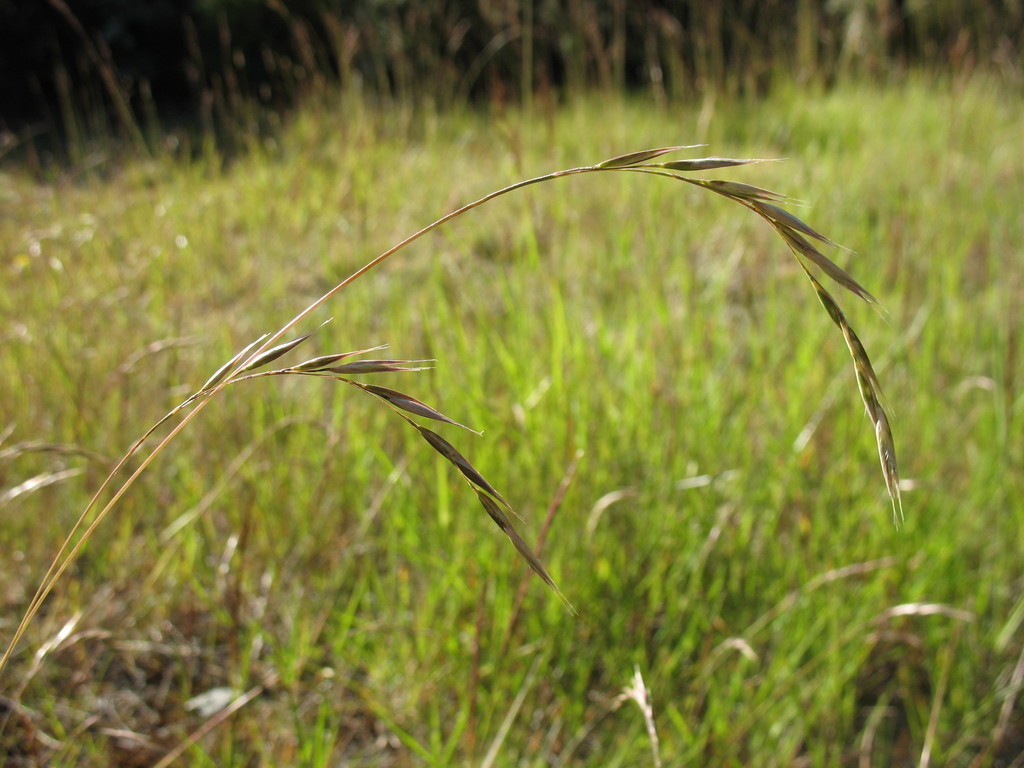Scientific Name: Rytidosperma penicillatum
Common Name: slender wallabygrass
Family Classification (Clade): Monocots
Family: Poaceae
Form Description: Slender, tufted grass often with nodding flowering stems.
Flowers: Spikelets with 4-6 flowers, purplish.
Fruit: Caryopsis
Municipality
Plant Communities
Habitat Notes
Grassy vegetation in the eastern mountains.
Site Tolerance
Exposed, Moist, Windy
Soil Tolerance
Loam, Well-drained
Propagation Calendar
-
Flowering Month
Jan Feb Mar Apr May Jun Jul Aug Sep Oct Nov Dec -
Seed Collecting Month
Jan Feb Mar Apr May Jun Jul Aug Sep Oct Nov Dec -
Sowing Month
Jan Feb Mar Apr May Jun Jul Aug Sep Oct Nov Dec -
Cutting Month
Jan Feb Mar Apr May Jun Jul Aug Sep Oct Nov Dec
Propagation Method
Seed Information
Seed Collection
Seed heads turn from green to off-white and dry out as seed ripens. Should release from heads easily. Harvest by cutting stalks with secateurs. Rub heads between 2 rubber car mats to extract seed. Clean by sieving.
Seed Treatment Method
Surface Sow Sow seed finely on the surface of the potting mix and cover with just enough mix to hold the seed on the surface when watered.
Seed Storage Life
Long
Seed Treatment Notes
Some provenances, especially from inland areas may have 2-4 months dormancy. Seed is best sown on the surface of seed trays and covered lightly. Most species have best results between 15-25°C. Some Rytidosperma germinate quite quickly if sown as soon as ripe. Suitable for direct seeding.
Germination Time
2-3 weeks
